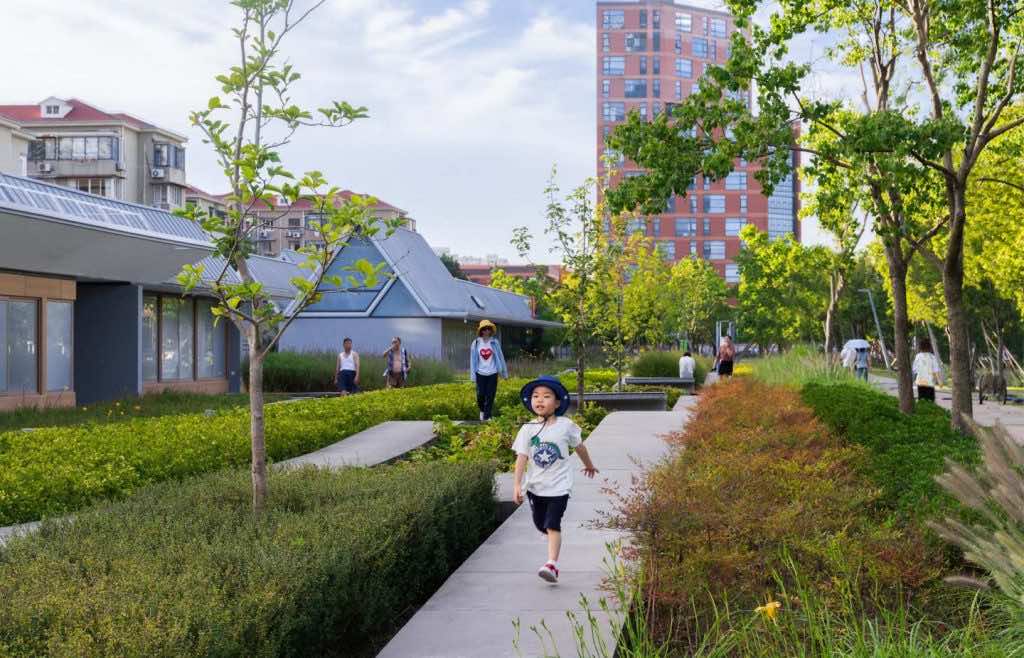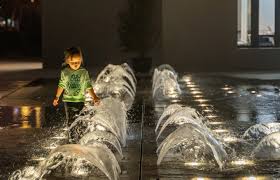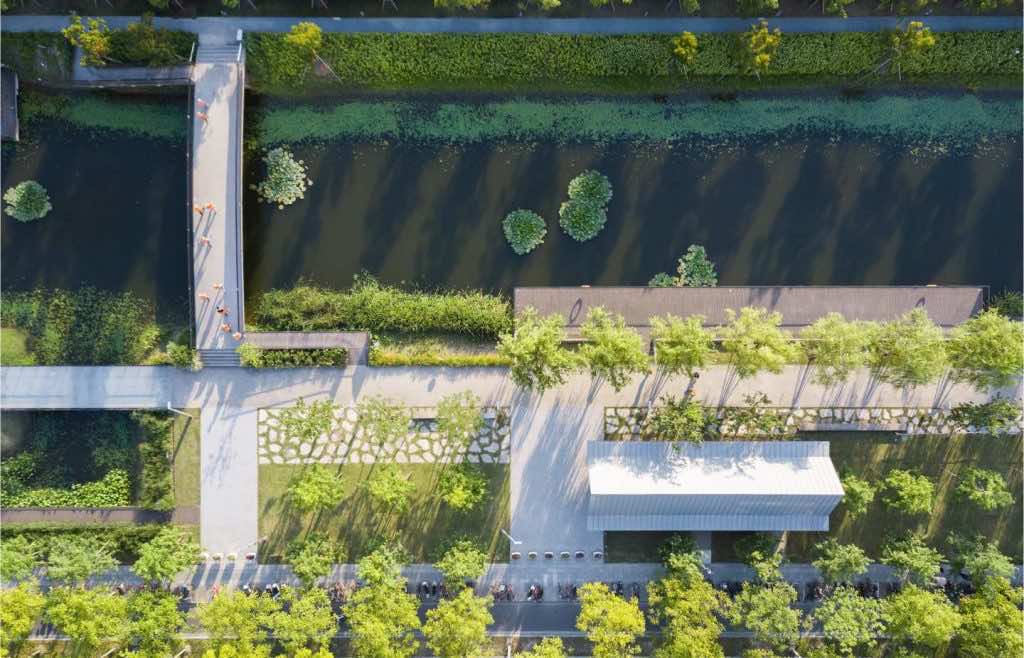An airport in Shanghai, China, has been converted into a public park by Sasaki, which has used sustainable approaches such as using recycled materials and installing a system to gather rainwater. Despite all these changes, the airport still holds some of its original features.
The park is named Xuhui Runway Park and measures around 36 acres. The site was once Shanghai’s Longhua Airport, and after it closed in 2011, it became home to an art gallery set up by OPEN Architecture by utilizing fuel storage tanks. Sasaki used the runway innovatively and turned it into a park instead of completely demolishing it.

Sasaki describes this project in the following words: “The park integrates portions of the original runway concrete where feasible to prolong the site’s memory.”
They further add: “The design team identified a row of 3.6-m (11.1-ft)-wide structurally sound runway panels to serve as the main pedestrian path of the park, with its original direction markings preserved. Near the north end, big portions of the runway concrete are integrated into the birdwatching grove to form intricate resting spaces. All new pavements and site furniture are made of architectural concrete, with variations accentuated at key spots. The profile of the site furniture is designed to recall the elements of the aircraft.”

The aircraft themed park’s special features include a playground, fountains, multipurpose lawn, and footpaths. According to Sasaki, the lighting in the park is designed to imitate the wings of an aircraft. Other features include a sunken garden, which can easily accommodate almost 900 people, a sitting area, cycling tracks, and restaurants.
To give a touch of nature, wildlife habitats such as bird aviaries, wild gardens with over 82 domestic plant species and 2227 trees, and a butterfly garden has also been created.

The rainwater gathered from within the park and the neighboring roads and filled in the water bodies after filtration. The project was awarded the Chinese green building award because of using eco-friendly materials and implying sustainable practices such as LED lighting and sustainable bamboo.
An example of such a project is converting the 1970s Seoul Highway into the New York City skyline and a park. Such projects have become quite popular recently because of their sustainable and environment-friendly nature.


